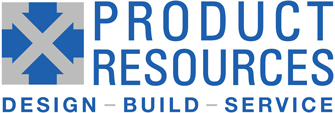Getting a product ready to ship to your customer can be complex.
First, consider the end user and their experience opening the package. Products sold to a retail market will typically use the packaging as a branding opportunity and the unpacking process is carefully crafted – think of your last smartphone. There are also packages that can be infuriating to open – consider the plastic clamshell packages, they’re cheap, and you get what you pay for. I’ve often thought a good game show would be to have the CEOs of consumer product companies come on TV and compete to open their company’s products. Personally, I’d want to have the Band-Aid concession.
For more business-related products, the packaging may not be as important, but the more thought that goes into it, the better the first impression. The packaging decisions should be made early in the design in case there is an impact on the product design, but the final packaging design must include not only the product, but any ancillary material (e.g., power cords, manuals, initial consumable) that must ship with the product. Also, the package labeling should include consideration for model numbers, serial numbers, NRTL marks, etc.
In addition to branding and labeling, one of the design criteria for the product packaging must be the protection of the product during shipment. The packaging can be tested to ISTA standards depending on the product mass and transportation methods and environments. Tests typically cover Shock, Vibration, Compression and Atmospheric conditions.
If the packaging process is not obvious, we will document it with drawings or procedures and checklists, as appropriate. This will ensure that all the product and materials required are placed properly in the packaging and ready for QA release.
If we are just shipping one or two at a time, the product packaging may be all there is and the box may go directly onto a truck (e.g., UPS). Typically, we would overpack the packaging in a brown box so that the product packaging remains clean, but our customer can always direct how we package the product.
If we are shipping many items in bulk to a warehouse, we will stack the boxes on a pallet, and wrap the palletized boxes in clear wrap to keep them dry. This method is the most widely used for shipping from Product Resources. Consideration should be given to this type of packaging earlier in the design process, as there are specific standards and criteria for stacking boxes on a pallet based on outer packaging dimensions, weight and shape. This could affect the packaging itself (consider a mark on the packaging stating ‘do not stack more than 4 high’) as well as the graphics printed on it.
For larger and heavier items, a crate may be a more appropriate means of transporting the product. We ship instruments and robotic equipment using this method. It has the advantage of being “too heavy to drop” and must be handled by a forklift. This packaging is more expensive, and the shipping is more expensive, but we find the equipment is better protected. The alternative is to use a cardboard box but tie it down onto a pallet so that it still must be handled with a forklift. It is a less expensive alternative but not as robust as a crate.
Packaging could also have regulatory implications. Depending on what the product is, what it does, and how delicate it is, a regulatory body may want to review packaging for product safety in transit (think Li-Ion Batteries).
